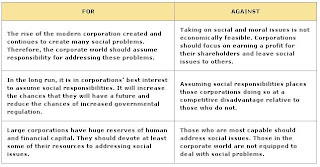Railways - Facts & Problems
Fares
· A second class sleeper berth costing a mere Rs 400 for a 1600-km journey, or just 25 paise for a kilometre, Indian Railways provides perhaps the cheapest rail transport in the world!
· This drops down to only half if one chooses to go by unreserved accommodation
· The passenger tariff has remained so for almost the last one decade while successive Railway Ministers, in a bid to maintain a populist image, have studiously avoided any meaningful hike. However, in order to balance the budget, freight tariff has seen repeated hikes, mostly mid-season, away from the media attention associated with the Railway Budget, leading to a progressive loss of market share.
· Currently, freight tariff for coal — which forms almost half the goods railways carry — is about three times that of US Class-I Railroads on purchasing power parity!
Problem with cheap fares
· explosive growth in passenger rail travel
· creating unmanageable crowds at major terminals due to low infra expansion
· Stampedes in Delhi division of Northern railway.
· A major initiative of increasing the number of platforms from 8 to 14 undertaken a few years back has proved to be inadequate to handle the massive rise in passenger volumes
Facts
With about 200 new trains being added every year over the last one decade, the 64000-km-long system has achieved a world record of over 9000 passenger trains daily which registered a whopping 6,94,764 million passenger km, higher than the Chinese Railways 6,89,618 million passenger km in 2007!
Problems of Delhi
· Rajdhanis - At the last count there were 19 in all - with their higher average speed continue to take a very heavy toll of other trains. - taking precedence over all the other superfast trains which may happen to be caught in their path - the poor freight train has just no way of recording a run of more than a 200-km a day on these high-profile routes.
· Perhaps, the most telling effect of this plethrora of new trains is on major terminals, in particular New Delhi which has to bear the brunt of all high profile trains — Gharib Raths, Sampark Krantis, etc — which have been added to the dozens of Rajdhanis and Shatabdis originating from the Capital. These provide an explosive mix when to this get added the long-distance superfast trains, resulting in chaos and very often stampedes during the peak season.
· Unable to stem the tide of new trains for over a decade or so, Delhi division has upgraded some of its outlying stations to full-fledged terminals. Time is now ripe to decongest New Delhi, with Old Delhi being designated to cater to mostly North, Anand Vihar to East, Sarai Rohilla to West and Nizamuddin to South-bound trains, while the Rajdhanis, the Shatabdis and some of the long-distance superfast prestigious trains would continue to originate from New Delhi.
· Recently there was a major shift of some of the special trains being run eastward for Chhat festival, from New Delhi to Anand Vihar.
· A “White Paper” brought out by Ms Mamata Banerjee in December 2009 had lamented the fact that passenger trains utilise nearly 60 per cent of the track capacity yet they contribute only 33 per cent of the revenue and affect the scope of running more freight trains on trunk routes.

Comments
Post a Comment